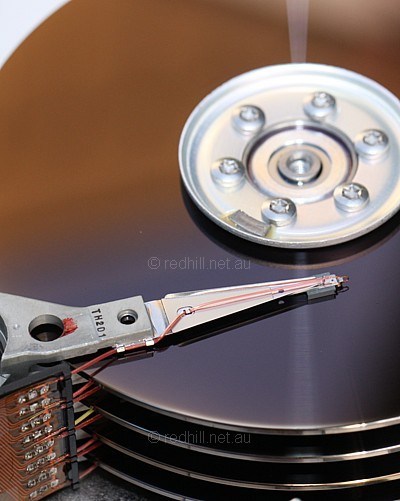
Fujitsu M2614ET (172MB, 1992).
Update your bookmark
This is the old site. You probably want the new site.
The new site has all the same information but adds more drives, updated text, and much better pictures of many models.
- Western Digital Caviar AA
- Samsung Spinpoint V9100
- Samsung Spinpoint V1020
- Seagate U10
- Seagate Barracuda ATA 2
- Western Digital Caviar BA
- Seagate Barracuda ATA III
- Western Digital WD400BB
- Western Digital Protege
- Samsung Spinpoint V2040
- Seagate U5
- Samsung Spinpoint P20
- Western Digital WD800BB
- Samsung Spinpoint V30
This old version of the Red Hill guide hasn't been updated for about ten years. The new version can be found here.
2000 was a year of contrasts: drive prices plummeted then, as the shortage hit, climbed steeply. We saw the debut of Seagate's astonishing 15,000 RPM Cheetah X15 — easily the fastest drive the world had seen so far — and yet a consistent general trend for newer drives to be slower than the older models they were replacing. We saw yet another of the grand old names of the storage industry disappear as Maxtor bought out Quantum, and we saw lowly Samsung step up to be counted as one of the top manufacturers. For all of the ups and downs though, it was a year that still produced some great drives.
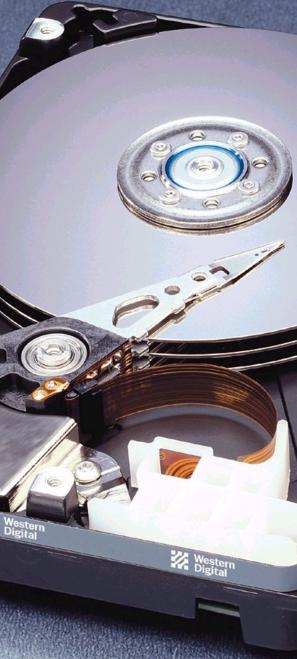
Western Digital Caviar AA
WD had been through some tough times in 1999. They started the year with the ink still wet on their much-trumpeted design and component supply agreement with IBM. Most of that year's Western Digital drives were essentially rebadged IBM designs, with the Expert line leading the charge into the world's Editor's Choice awards. But then it all changed.
Despite having an excellent range of award-winning products, WD were loosing money hand over fist. The first thing to go was the very expensive foray into the SCSI market. SCSI was (and still is) a low-volume market with too many suppliers already, and trying to carve out a slice of it against the established players had always seemed ambitious.
Next up was the recall of thousands of 1999 model 102AAs to replace a potentially faulty batch of logic chips. (Not the same drive as the later 102AA — see our comments on WD's new naming scheme below.) People made a lot of fuss about this one, far more than was warranted, actually. To be sure, they had a problem with the quality of some third-party components, but on the other hand, WD acted promptly and responsibly to deal with it. In our book, that stands to their credit.
Then came WD's quiet return to doing its own design with parts sourced from independent suppliers once more. The Expert name was dropped again, and all WD's, both 5400 and 7200 RPM, were now called "Caviars". For a while, anyway. Then came two lines of low-end drive, called "Spartan" and 'Protege". So far so good, but why still confuse the public by using the same name for the mainstream 5400 and high-end 7200 RPM units?
Making matters more difficult, Western Digital have become rather secretive. They no longer make it easy to tell exactly which drive is which. Consider the new WD model numbering scheme. The traditional Western Digital model number told you quite a lot about the drive. Take the AC35100. The name has four parts:
- A is the interface, in this case, ATA (better known as IDE).
- C is the family, in this case, a Caviar, their mainstream 5400 RPM range.
- 3 tells us that the drive has three platters. In fact, with this particular example, it is a five head design, so one of the platters is only used on one side, though you can't tell this from the model number.
- 5100 is the notional capacity in Megabytes.
Armed with this knowledge, you could immediately tell the approximate technology level, and thus the performance of a Western Digital drive from the model number alone. You can make an educated guess that the AC25100 will be faster than the AC35100, because it has fewer platters and thus higher areal density. In short, a simple, informative and logical scheme. Contrast it with the new WD numbering scheme, which would give both these drives the exact same name: WD 51AA — or, indeed, give the same name to the IBM-sourced 102AA of recall fame, and to this current drive.
The new naming scheme works like this: first comes WD for Western Digital, then the capacity in hundreds of megabytes (what a stupid choice of unit!), and finally a two letter code to indicate the class and interface. The first letter indicates the performance category: "A" for a standard 5400 RPM drive, "B" for a faster 7200 RPM unit, and "E" for their slower, cheaper economy-class 5400s. The second letter indicates the interface type: so far there are only two: "A" for ATA-66 and "B" for ATA-100. We assume that "C" will indicate Serial ATA when that arrives sometime in 2002 or 2003.
But for all our gripes, on the whole Western Digital continued to provide fast, reliable, modern drives, and these 2000 models remained very much on our list of favoured products. The WD102AA was an excellent drive which we would have sold more of had it not been for the availability of the even better Samsung SpinPoint V1020 (which meant that the WD102AA mostly just covered out of stocks as our second-line 10GB drive), while the 153AA, not having a direct competitor in its size class on our shelves, sold quite briskly.
| Performance | 1.22 | Reliability | AA1 |
| Data rate | 234 Mbit/sec | Spin rate | 5400 RPM |
| Seek time | 9.5ms | Buffer | |
| Platter capacity | 10.2GB | Interface | ATA-66 |
| 102AA | 10.26GB | 2 GMR heads | * |
| 153AA | 15.39GB | 3 GMR heads | *** |
Samsung SpinPoint V9100
Typical modern Samsung drives with the usual Samsung virtues. They were decently quick, very reasonably priced, and had a superb reliability record.
Samsung, almost alone among the drive manufacturers, seem to be aware of the value of the entry-level. (Or, perhaps, have a cost structure that allows them to cater for it.) The 4.3GB V9100 was the last drive of this size to be available new. It was not a volume-selling capacity by then, of course, but the demand for cheap, reliable little drives is always present. Indeed, it is stronger than ever now that such a high proportion of machines are networked. Many business systems just need enough hard drive to boot off and maybe store a handful of applications. Even in these days of bloated operating systems, anything more is simply wasted.
The 8.4GB drive in this series was a bigger seller — 8GB was entry level by early 2000, and though 13 and 17GB drives were only a little more — perhaps $40 or so — for many people it remained enough. Indeed, if the greatly lowered number of hard drive upgrades we do these days is any guide, it is still enough for many users.
| Performance | 1.31 | Reliability | AA1 |
| Data rate | 284 Mbit/sec | Spin rate | 5400 RPM |
| Seek time | 8.5ms | Buffer | 512k |
| Platter capacity | 8.4GB | Interface | ATA-66 |
| SV0431D | 4.3GB | 1 GMR head | * |
| SV0842D | 8.4GB | 2 GMR heads | *** |
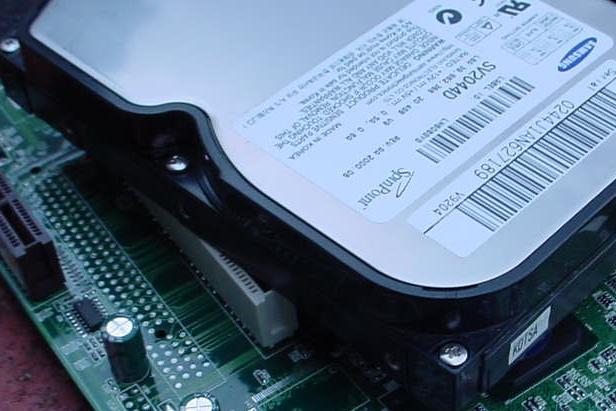
2000 Drive of the Year
Samsung SpinPoint V1020
Samsung have come a long, long way since the horrid little black things they used to make in 120MB days. Samsung drives have always been very reasonably priced, and typically have been rather better performers than you would expect, but reliability was their Achilles heel: in the days of 120MB drives, they were dreadful. Not any more!
The V1020 series is their best effort yet. We sold more 10GB and 20GB V1020s than any other drive in 2000 — quite possibly more than all other drives combined. They have proved incredibly reliable: nothing can last forever, but as we write in February 2002, we have yet to see a single faulty V1020 — not one. This is a record very few other drives have managed, certainly none that we have sold in such volume (though the 1.7GB IBM Deskstar — itself a Drive of the Year winner — and one or two Seagates have come close).
But they were not just reliable: they were as cheap as or cheaper than competing drives, they remained readily available nearly all year round (itself no mean achievement in a year when major component shortages caused chaos throughout the storage industry), they run so quiet that sometimes we found ourselves wondering if we had plugged the power cable in or not, and best of all, they were astonishingly fast for a 5400 RPM drive. There are numerous ways to measure hard drive performance, and no two ways will always agree, but the V1020s comfortably out-performed all comers on most benchmarks, and real-life use simply confirms their speed.
For us here at Red Hill, the 20.4GB SV2044D was particularly successful, as during the first half of 2000 it was almost alone in its market segment: IBM and Western digital drives of this size were all too often been overpriced or out of stock, while Seagate's U8 range topped out at 17GB. Through the second half of the year, the 10GB and 20GB V1020s were our best-selling drives by a fair margin, and remained so until their eventual replacement by Samsung's own V2040 drives.
| Performance | 1.30 | Reliability | AAA |
| Data rate | 291 Mbit/sec | Spin rate | 5400 RPM |
| Seek time | 8.8ms | Buffer | 512k |
| Platter capacity | 10.2GB | Interface | ATA-66 |
| SV1022D | 10.2GB | 2 GMR heads | **** |
| SV1533D | 15.3GB | 3 GMR heads | |
| SV2044D | 20.4GB | 4 GMR heads | ***** |
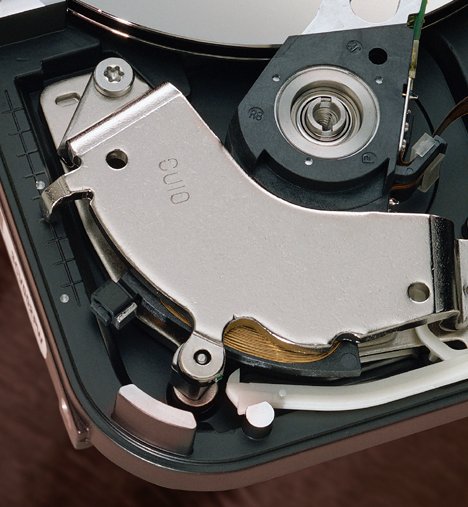
Seagate U10 Family
On paper, the U8 replacement was exactly what you'd expect: a little bigger, perhaps a little faster, everything else stayed the same. Once again it came in the black rubberised anti-shock coating and, like all Seagate drives since about 1999, shipped in Seagate's clear plastic anti-shock drive container — an excellent innovation, by the way, and one that we expect all drive manufacturers will adopt eventually. (Indeed, we wonder more of them have not already — so far, only Samsung seem to have taken the hint.)
The 20GB U10 finally gave our best-selling Samsung V1020 20GB drive some direct competition — there were very few 20GB drives around at that time, despite it being a popular category. It was interesting to compare the two drives from the point of view of the purchasing manager. The Samsung already had a superb reliability record, but we expected (and at least to start with got) no less from the Seagate. On paper, performance was so close to equal that it didn't matter; unlike the 7200 RPM drives, availability was rarely a problem early in the year, though Seagate ran into major component supply problems later on, which left them out of stock for a long, long time. That left only price, and even there there was little to choose.
In practice, we strongly favoured the Samsung here at Red Hill, and sold it in vastly greater numbers. Despite the Seagate's good on-paper specs, the SpinPoints were decisively faster, both on benchmark tests in the workshop and in real-world, hands-on use. Ultimate speed is not what drives in this category are all about, of course. Nevertheless, we think Seagate could have tried a little harder with the U10. It was a capable, reliable drive, but should really have improved on the old U8 performance level — which itself was not outstanding, even for an entry-level drive. In reality, despite Seagate's wildly optimistic marketing department claims of an 8.9ms seek time for it, U 10s actually deliver seek time in the 12ms range, and the new model was a clear step backwards. Our feeling is that the disparity between the claimed seek time and the actual, on-test performance is primarily due to Seagate's need to supply cheap drives to the major OEMs to sell in name-brand supermarket systems, where features on a tick-list mean everything and actual performance means nothing. And it is in this market that the U 10, like all the U Series drives, has been an outstanding success.
| Performance | 1.17 | Reliability | AA2 |
| Data rate | 308 Mbit/sec | Spin rate | 5400 RPM |
| Measured seek time | 12.5ms | Buffer | 512k |
| Platter capacity | 10.2GB | Interface | ATA-66 |
| ST-310212A | 10.2GB | 2 GMR heads | ** |
| ST-315323A | 15.3GB | 3 GMR heads | |
| ST-320423A | 15.4GB | 3 GMR heads | * |
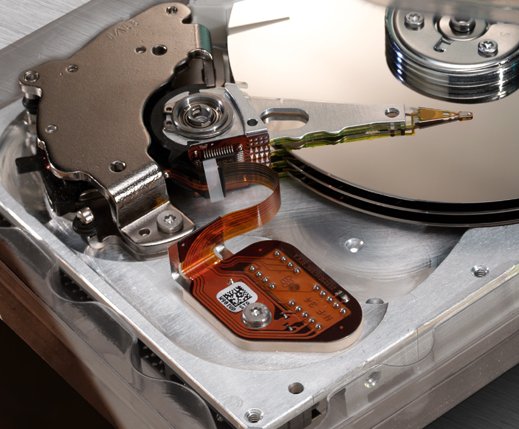
Seagate Barracuda ATA 2
In sales terms, these repeated the success of the first Barracuda ATA, and confirmed Seagate's renewed determination to remain a major player in high-performance IDE. Data rates and areal density were up again — which was no surprise — but they claimed to have shaved a little more off an already excellent seek time, which was very welcome.
Alas, the reality of the test-bench shows that the Series 2 was a fraction slower than the outgoing model, not faster at all. No matter, perhaps: it remained an excellent drive. The result was that there was so little difference in performance terms between the end-of-century crop of 7200 RPM IDE drives that we couldn't tell them apart without very careful measurement. Pending one company or another making a major advance, in 7200s, our advice then was as it remained for the next year or two now: buy any brand you like because you will struggle to tell much difference.
With the previous model Barracuda ATA, for no good reason that we could fathom, Seagate announced five sizes from 6.8GB to 27GB (2, 3, 4, 6 and 8 head drives) but declined to ship any but the 20.4 and 27GB versions in quantity. We assumed that they would do the same with this new model, which was announced in 10, 15, 20 and 30GB versions. We wondered at the wisdom of this: sure, it is less cost-effective to build single platter drives, but the bulk of our demand is usually in the small to mid size ranges — between 10 and 20GB when these were first announced — and was a pity to limit so many people's choice to just 5400 RPM drives. Ironically though, Seagate shipped the full model range this time — just the market moved on, so now that we could at last get small fast drives, no-one wanted them. In the storage industry, just as in so many other fields, Murphy is the best authority of all.
| Performance | 1.45 | Reliability | AAX |
| Data rate | 364 Mbit/sec | Spin rate | 7200 RPM |
| Seek time | 8.3ms | Buffer | 2MB |
| Platter capacity | 10.2GB | Interface | ATA-66 |
| ST-315320A | 15.3GB | 2 GMR heads | * |
| ST-320420A | 20.4GB | 3 GMR heads | ** |
| ST-330630A | 30.6GB | 3 GMR heads | * |
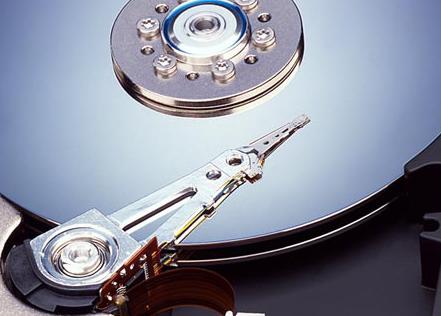
Western Caviar BA
An interesting drive in a sense, as there was very little to notice about it! After the outstanding performance of their IBM-sourced Expert drives, Western Digital's in-house replacement models were an anti-climax. Speed-wise, they were nothing special, among the slower of the 7200 RPM units around, but still in the ballpark. They were remarkably quiet, sensibly priced most of the time, and though we only saw modest numbers of them, seemed to be as reliable as most drives.
In a more competitive market, the BA series might have struggled, but with the Deskstar 75GXP being rather expensive quite often, and the Seagate Barracuda ATA-II not being a particular speed-demon either, these sold at a slow but steady rate. In reality, the lack-lustre performance of most 7200 RPM drives in late '99 and throughout 2000, together with the availability of a superb 5400 RPM unit in the Samsung SpinPoint V1020, meant that the performance gap between 5400 RPM and 7200 RPM drives was small, while the price gap remained significant. In short, we sold a lot of SpinPoints, not many WD BAs, Barracuda ATA-IIs or Deskstar 75GXPs. For most buyers, this was a sensible choice, the extra $80 or $100 was better spent on CPU, RAM or video card.
The 5400-7200 RPM price gap did not start to narrow until about October, when the worldwide shortage of DSP (Digital Signal Processing) chips brought on a shortage of hard drives — and shortages always hit the entry-level products hardest. Most drives rose by about 20% as the shortage bit, with the smallest and cheapest drives rising the most. In consequence, as 2000 drew to a close we were seeing 7200 RPM drives start to sell in larger volumes, a trend which continued into mid-2001.
| Performance | 1.37 | Reliability | AA1 |
| Data rate | 304 Mbit/sec | Spin rate | 7200 RPM |
| Seek time | 8.9ms | Buffer | 2MB |
| Platter capacity | 10GB | Interface | ATA-66 |
| WD153BA | 15.4GB | 3 GMR heads | * |
| WD205BA | 20.5GB | 4 GMR heads | ** |
IBM Deskstar 75GXP
Generally regarded as the fastest of all the 2000 model high-performance IDE drives, though to be fair the hands-on differences were really rather small. The obvious point of difference with the GXP was its maximum capacity — the biggest model in the range went up to a whopping 75GB. The penalty for having this enormous amount of storage was performance: the larger units, with their need to move a greater number of heads, had a slightly higher seek time. Sharp-eyed readers will have noticed that this is nothing new: Seagate, for example, have been quoting longer seek times for their bigger SCSI drives for years. But as areal density increases and the data tracks are squeezed ever-closer together, it becomes more and more difficult to position the read head precisely over the track. With the more massive head-stack of a multi-platter drive, it is harder still.
In practice, very few people buy the biggest sizes anyway — the 75GB monster cost almost as much as a 15,000 RPM SCSI drive. The smaller sizes, though, were affordable: while the 20GB version usually seemed to cost more than a Seagate or a Western Digital, the 30GB unit was excellent value.
Overseas sources floated consistent stories of major reliability problems with the Deskstar 75GXPs, the 45GB model in particular, and the drive became the subject of a successful class action suit in the USA. Here we sold only a bare handful of 75GXPs. Of these, two arrived faulty but we believe that that may have been shipping damage. The others have been trouble-free and are all still in service, as are the replacement drives for our DOAs. (Like most manufacturers of most things, we are far less concerned about DOAs than we are about in-service failures. A DOA drive costs a few extra minutes in the workshop and some minor inconvenience; at worst, a delay of a day or two while you order a replacement unit. An in-service failure on the other hand, often results in customer data loss, significant inconvenience to them and cost to us, and damages our reputation for quality.)
As always, we base our reliability ratings on our own experiences, nothing else, and while we sold only a very small number of GXP75s, we had no in-service failures with them. Given the number of complaints we have seen about the 75GXP's reliability from overseas we would find it difficult to recommend the drive; nevertheless, our own very limited experience with them was satisfactory and our cautious reliability rating of them reflects this.
| Performance | 1.49 | Reliability | no data |
| Data rate | 444 Mbit/sec | Spin rate | 7200 RPM |
| Seek time | 8.5ms | Buffer | 2MB |
| Platter capacity | 15GB | Interface | ATA-66/100 |
| DTLA-307015 | 15.3GB | 2 GMR heads | |
| DTLA-307020 | 20.5GB | 3 GMR heads | * |
| DTLA-307030 | 30.7GB | 4 GMR heads | * |
| DTLA-307045 | 46.1GB | 6 GMR heads | |
| DTLA-307060 | 61.4GB | 8 GMR heads | |
| DTLA-307075 | 76.8GB | 10 GMR heads |
Western Digital Spartan
A little-known drive with nothing much to recommend it. Our Western Digital distributor told us that the Spartan ran at 4500 RPM and in the workshop it certainly performed like a 4500, though it might have been a very sluggish 5400. Western Digital are coy about these entry-level drives: their web page pretends that they never existed. There is a Spartan listed on the site, but at 6.8GB it is clearly not the drive that we sold a bare handful of. Odd looking things, they were very light and looked rather cheap and nasty. Of the two or three we saw, one failed after six months or so — hardly a statistically valid sample, but not encouraging just the same. We looked forward to getting its replacement returned to us so we could run formal performance tests on one of these mysterious drives, but the replacement unit, shipped to us promptly as Western Digital always do, was a much superior but uninteresting 8GB Caviar 5400. For once, we would have rather had the slower drive! The Spartan appeared without fanfare in the spring of 2000 and had disappeared by the start of summer. We assume that there was another two head 15GB version, though we didn't see any. WD would have another, more convincing, stab at the entry-level market before the year was out — the Protege which is described on the following page.
More information on these from an American friend: 'The first Spartan drive was the WD68AA. It was a 5,400 RPM drive, just like a regular 5,400-rpm Caviar drive, however it had a 1-year warranty. The 5,400 Spartan line included 3 families, which, in the end produced three drives: WD68AA, WD84AA, and WD102AA. After these three generations, WD came out with a new chassis design for their value-line products, called the first one Spartan, and spun it down to 4,500 RPM. This new chassis led the way for a new name, Protégé. This first Protégé drive was labeled: WD75DA (D for its 4,500-rpm speed) and subsequently a dud. After this feeble attempt, WD spun the drive back up to 5,400-rpm, programmed the firmware for ATA-100, and began using the "EB" description.'
We are now more confused than ever! Our handful of drives we got were definately 7.5GB units and definately labelled "Spartan". The model number we are uncertain of. With luck, we will see one of the remaining ones traded back in sooner or later and examine it.
| Estimated performance | 1.15 | Reliability | no data |
| Estimated data rate | 300 Mbit/sec | Spin rate | 4500 RPM |
| Seek time | about 12ms | Buffer | |
| Platter capacity | 15GB | Interface | ATA-66 |
| WD75DA | 7.5GB | 1 GMR head | * |
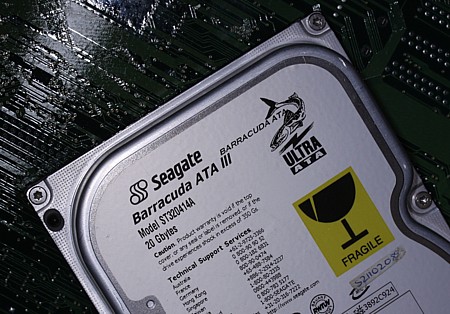
Seagate Barracuda ATA III
A decent enough drive, but clearly not worthy of the Barracuda name. When this drive was announced, the obvious improvement was the extraordinarily high internal data rare — 500MBit/sec, a world record at that time. Not nearly so impressive was the claimed seek time, which was higher than that of the previous model. All the drive manufacturers at around this time were finding head positioning rather difficult as recording density increased year-on-year and the required accuracy increased accordingly, so Seagate were not alone, but there was more to this apparent performance decrease than met the eye.
With the older Barracuda ATA-II, Seagate had claimed 8.0ms seek and actually achieved 8.6ms — the claim was stretching the truth a bit but somewhere in the ballpark. With the Barracuda ATA-III, however, the published claim was 8.9ms. At first we assumed that this was simply a return to the traditional Seagate policy of providing accurate, honest product specifications. It wasn't. On the test bench, Barracuda ATA-IIIs turned in an even higher seek — no less than 11.2ms! This would have been pretty good for a high-performance drive five years earlier; but wasn't anywhere near the standard established by Seagate's own older products, never mind performance drives from IBM and Western Digital.
So why had Seagate introduced a new product with worse performance than the old one? Our guess, much too optimistic, was that the company was repositioning the Barracuda ATA line further downmarket in order to leave room for a serious high-performance 10,000 RPM IDE drive. In fact, there were no such plans. Despite its 7200 RPM spin-rate and incredibly high data transfer rate (which made an excellent choice for A/V work), the Barracuda ATA III was really a decent mid-range drive, not a true high-performance competitor to the Deskstar 60GXP or the WD400BB at all.
| Performance | 1.38 | Reliability | AAX |
| Data rate | 500 Mbit/sec | Spin rate | 7200 RPM |
| Measured seek time | 11.2ms | Buffer | 2MB |
| Platter capacity | 20GB | Interface | ATA-100 |
| ST-320414A | 20GB | 2 GMR heads | ** |
| ST-330620A | 30GB | 3 GMR heads | * |
| ST-340824A | 40GB | 4 GMR heads |


